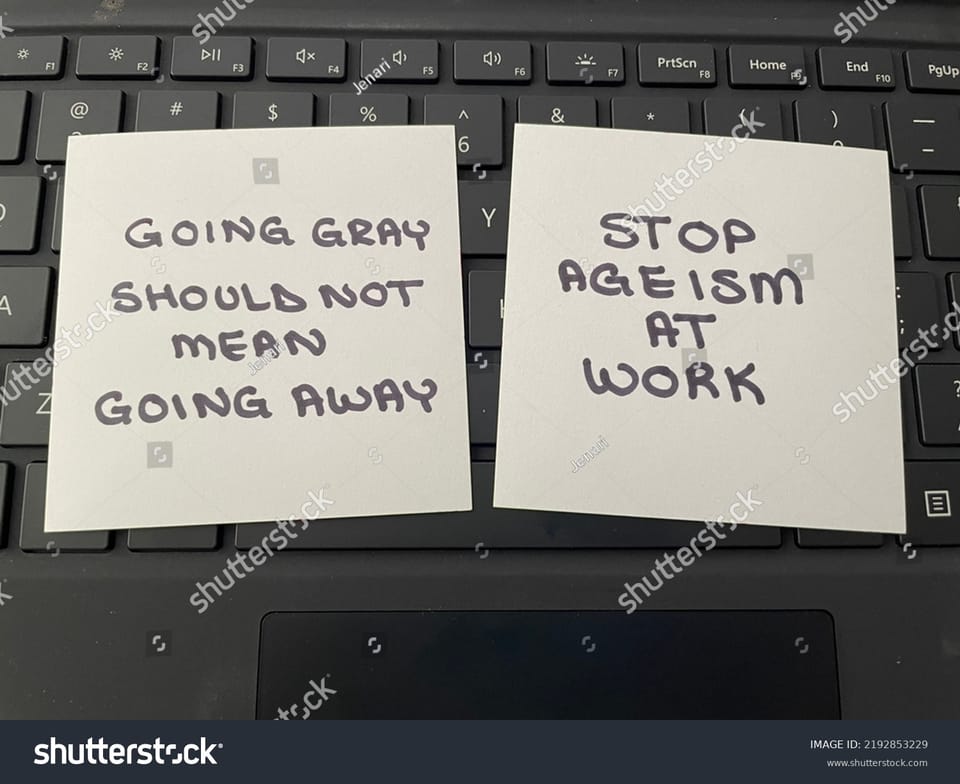Ageism in the Job Market

Age discrimination is the most common issue in this very competitive job market, significantly affecting job seekers across all groups. Ageism can affect workers at different stages of their careers, but this is a real problem for those who are in their 40s, 50s, and 60s. There’s an assumption that older workers are less capable, less adaptable to new technologies, more resistant to change, less creative, or unwilling to learn new skills than their younger counterparts.
I totally disagree! Even older workers bring stability, proven problem-solving skills, and a depth of industry insight that can’t be matched by someone just starting out. Yet, countless qualified individuals are overlooked for promotions, excluded from training opportunities, or even pushed into early retirement simply because they don’t fit into a certain age bracket.
Unfortunately, studies reveal that women experience more age discrimination than men. They are often seen as less energetic, less competitive, and even less innovative as they get older. This bias can harm their career and financial stability, leading to exclusion from job opportunities and the labour market. This article explores what ageism is, its impact on the job market, and strategies to combat it.
What is Ageism?
Ageism is described as prejudice, stereotypes, or, we can say, discrimination against individuals based on their age. It often manifests as negative stereotypes about older workers, leading to unfair treatment during hiring and promotions. According to a report by AARP(2022), nearly 80% of workers aged 40 - 65 have experienced some form of age-based discrimination in the workplace. This includes promotion barriers, negative comments about their age, hiring biases, and struggle to find jobs after being laid off.
The Impact of Ageism in the Job Market
Effects on Older Workers:
Mental Health: Employers might assume that older workers lack technological skills or are unable to adapt to new environments. The pressure of job hunting combined with societal stigma can cause feelings of worthlessness, anxiety, and stress among older employees.
Underemployment: Many older workers accept part-time or lower-skilled jobs due to the challenges of finding new roles that match their qualifications.
Early Retirement Pressure: Sometimes, older workers are compelled to retire early due to a lack of opportunities or hostile work environments, which impact their financial stability.
Longer Job Searches: It has also been found that older job seekers take longer to find employment compared to younger candidates, leading to financial strain and lower self-esteem.
Effects on Younger Workers:
Lack of Credibility: Younger job seekers are often perceived as inexperienced, leading employers to overlook their qualifications in favor of older counterparts.
Job Responsibilities: They might be assigned menial tasks, regardless of their capabilities, due to stereotypes suggesting they need to "earn their stripes."
Increased Competition: Young job seekers face tough competition not only from peers but also from older workers who are often more experienced.
Career Advancement: Age-related biases can hinder younger workers’ opportunities for professional advancement, as employers favor older individuals for leadership roles.
Effects on Organizations:
Ageism doesn’t just hurt individuals; it also negatively impacts organizations. Here’s how:
Loss of Talent: Ageism can result in the loss of industry knowledge and experience talent, which means companies miss out on valuable skills and knowledge that older employees can bring.
Mentorship Opportunities: Older employers can serve as mentors for younger employees. They can guide and support young workers to foster a culture of learning and growth.
Legal Risks: Organizations that discriminate against their employees based on age may face lawsuits, which result in financial penalties and a bad reputation in the market.
Diversity: A diverse workforce that includes individuals from different age groups can lead to better problem-solving and innovation.
Strategies to Combat Ageism in the Workplace
To combat ageism, both employers and job seekers need to take proactive measures:
Emphasize Lifelong Learning
To overcome ageism, Continuous learning and professional development are required :
- Encourage older workers to continue to develop their skills and provide opportunities for growth and development. This not only enhances their employability but also counters the stereotype that they are resistant to change.
- Attend industry events or workshops to stay current on industry trends and technologies.
- Enroll in various certified online courses to learn new technologies or skills relevant to your industry.
- Create mentorship programs where older employees can share their knowledge with younger colleagues.
Revise Hiring Practices
Employers should consider revising their hiring processes to create a culture that values the contributions of workers of all ages:
- This involves training hiring managers to recognize the value of older workers and counteract their biases.
- Avoid age-biased indicators from resumes and applications during the initial screening process.
- Focus on skills and experiences over demographic information needed for the role.
Highlight Your Strengths
When applying for jobs, focus on highlighting your unique strengths:
- Show your years of experience and how it adds value to the organization.
- Highlight soft skills such as communication, teamwork, and problem-solving that improve with age.
Tap Into Your Network
A strong professional network is especially essential for those facing ageism.
- Leverage your network to uncover hidden job opportunities, gain insights into companies, and secure referrals.
- Networking can also provide support and advice from peers who have faced similar challenges.
Build a Strong Online Presence
In today’s digital age, we should have an updated online presence:
- Keep your LinkedIn profile up-to-date with your latest skills and experience.
- Share articles or insights related to your field on social media platforms to establish yourself as a thought leader who stays ahead of the curve.
Final Words
Ageism in the job market is a multifaceted issue that requires concentrated efforts from both employers and job seekers to be addressed. By embracing lifelong learning, leveraging experience, and promoting inclusive hiring practices, we can create a more equitable job market that values experience and innovation. As we move forward, it’s crucial to recognize that age is not a barrier but an asset that drives success and growth in the workplace.



